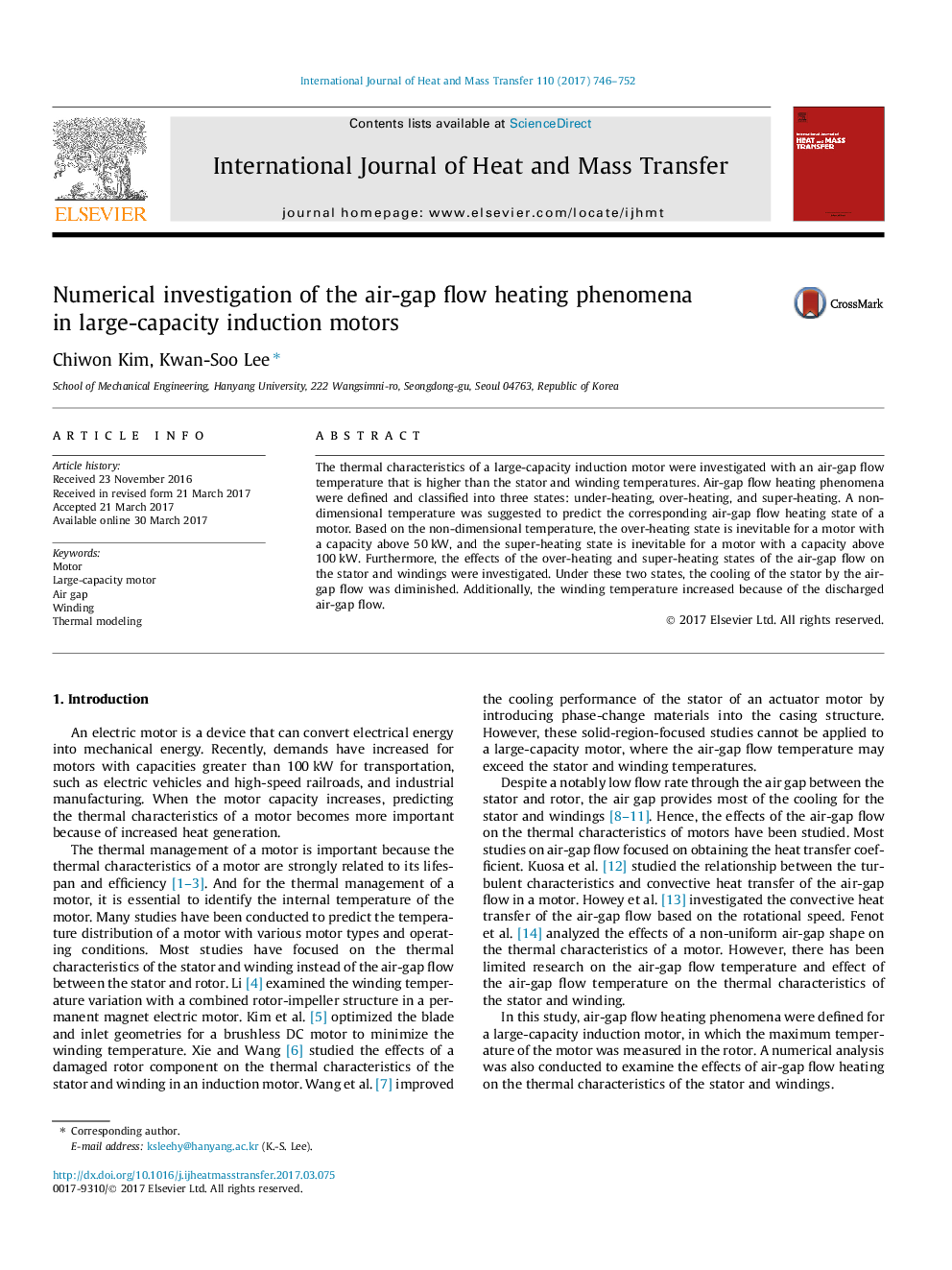| Article ID | Journal | Published Year | Pages | File Type |
|---|---|---|---|---|
| 4993603 | International Journal of Heat and Mass Transfer | 2017 | 7 Pages |
Abstract
The thermal characteristics of a large-capacity induction motor were investigated with an air-gap flow temperature that is higher than the stator and winding temperatures. Air-gap flow heating phenomena were defined and classified into three states: under-heating, over-heating, and super-heating. A non-dimensional temperature was suggested to predict the corresponding air-gap flow heating state of a motor. Based on the non-dimensional temperature, the over-heating state is inevitable for a motor with a capacity above 50Â kW, and the super-heating state is inevitable for a motor with a capacity above 100Â kW. Furthermore, the effects of the over-heating and super-heating states of the air-gap flow on the stator and windings were investigated. Under these two states, the cooling of the stator by the air-gap flow was diminished. Additionally, the winding temperature increased because of the discharged air-gap flow.
Keywords
Related Topics
Physical Sciences and Engineering
Chemical Engineering
Fluid Flow and Transfer Processes
Authors
Chiwon Kim, Kwan-Soo Lee,
